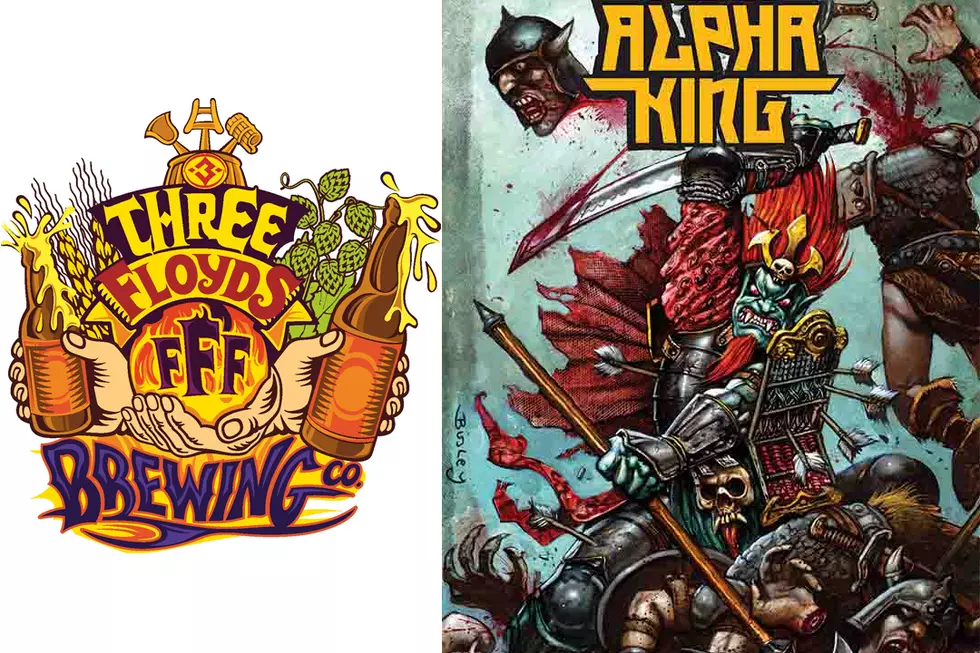
Extra Pulp: Brian Azzarello Talks ‘First Wave’
In a publishing era heavy on the resurgence of Silver Age properties, Brian Azzarello's been digging in the Gold. Today's "First Wave" #1 sees many of comics most iconic pulp heroes from the '30s and '40s - including Doc Savage, The Spirit and The Batman - united in a brand new shared universe where their exploits will be super without the benefit of powers. We caught up with writer and series architect Brian Azzarello on the eve of the six-issue launch for his take on launching a brave new world with brand new rules.

ComicsAlliance: Readers had a sampling of "First Wave" back in November when "The Batman/Doc Savage Special" #1 came out, but today is pretty much the end of a 5-year journey of you and DC putting the book together. What's it feel like to finally have "First Wave" #1 come out? Does it feel like the end of a long struggle?
Brian Azzarello: No, [Laughs] the beginning of a new one. The heavy lifting is done. Now the actual fighting begins.
CA: That's a good way of looking at it I suppose, since the characters will be mostly punching each other instead of shooting lasers out of their eyes.
BA: Well, they shoot bullets too...  CA: That's true – including The Batman. So, the pitch for the book – especially for new readers has kind of been that the "First Wave" universe is a grittier, more realistic world, kind of like the '40s, but at the same time there's a giant Frankenstein monkey robot in the jungle in the first issue. So it's kind of got this balance of pulp realism and also a little bit of the more sci-fi, superhero stuff at the same time. How do you balance that? What was your approach to kind of balancing out those two elements?
CA: That's true – including The Batman. So, the pitch for the book – especially for new readers has kind of been that the "First Wave" universe is a grittier, more realistic world, kind of like the '40s, but at the same time there's a giant Frankenstein monkey robot in the jungle in the first issue. So it's kind of got this balance of pulp realism and also a little bit of the more sci-fi, superhero stuff at the same time. How do you balance that? What was your approach to kind of balancing out those two elements?
BA: There are no superheroes in this book. Alright? Let's make that clear. There are no super powers in this book. There is no magic in this book. It's grounded in a reality that we, ourselves, experience. Those were the original rules that we set down from day one: No super powers, no magic.
CA: But there's robots...
BA: Well yeah there's robots. You're talking to me on a cell phone too. Robots can explained with science. Science is the determining factor here.
CA: Back in January the "First Wave" spinoff books were announced for Doc Savage and The Spirit. What's your level of involvement on those books and how close are you working with everybody to kind of stay on the same page for "First Wave's" universe?
BA: Well, I wrote the bible for the series. So everybody is looking at it and has a copy of the bible. We're all working on it. We're all on the same page as far as any sort of changes or alterations come from for any of these characters. So The Spirit that you see in "First Wave," is the same Spirit that you're going to see in "The Spirit." It's the same world. That's the other thing that's interesting about this. These characters are all operating in the same world. That's the very first time. No one's ever done that before. What was important was that was our goal to do. So now we've got to create a world where this seems plausible and not forced. And I think we've managed to do that.
 CA: When you were sitting down to write this bible, how did you really determine which characters you wanted to see live in this same world together?
CA: When you were sitting down to write this bible, how did you really determine which characters you wanted to see live in this same world together?
BA: The pulp characters were in regardless. When Dan [DiDio] and I originally talked about this a few years ago, he was telling me "We'll have Doc Savage, we'll have The Avenger, I want to put The Spirit in this..." and I was more interested in what he was telling me about and I just said, "Well, what about some of the DC characters? The ones that don't have super powers? Why don't we put those in there too?" And then it just started to kind of fall into place. "Blackhawks?" Great. Other names were thrown out too – the 800 lb Gorilla without super powers, The Batman.
CA: The series is taking some characters in pretty new directions. The Batman in "First Wave" is pretty much a Batman that we've never seen. By taking these characters in a new direction, are you prepared for a fan reaction one way or another? Or do you just ignore all that and kind of write the book you want to write and hope everything kind of falls into place and clicks with readers?
BA: Boy, you know, I think it's the latter to some degree. I think that's the way I usually approach just about everything. I've got to sit down and have a pretty clear idea of who these characters are, what the plot is and then just writing, I can't worry about fan reaction too much. I know some people will love it, some people won't – this might sound weird but I always feel like if everybody likes what I'm doing, I'm doing something wrong. I have to challenge myself and I have to challenge the reader. We should be weaving and working on new stories and not the same story over and over.
CA: How would you pitch the book to a new reader who maybe has never read any of the pulp stuff?
BA: Batman's in it. I don't think there are many comic readers who are really familiar with Doc Savage, certainly more with The Spirit. A lot of readers don't know Black Hawks either. But everybody knows Batman. I know a majority of readers are going to be coming into this with fresh eyes. It's not like I'm reinventing anything for them or to them. The characters that they're going to probably notice differences in the most would be The Batman, because they might not be as familiar with the other guys. Listen – they're going to love it, they're going to love everything [Laughs]. They're going to finish reading it and they're going to read it again.
 CA: You've mentioned a couple characters since we've started talking a couple of times, so I think I have a guess here – but who's your favorite character to write on the "First Wave" books?
CA: You've mentioned a couple characters since we've started talking a couple of times, so I think I have a guess here – but who's your favorite character to write on the "First Wave" books?
BA: What's your guess?
CA: Well, I'm guessing Doc Savage?
BA: You guessed wrong [laughs]
CA: Is it The Batman?
BA: Well, I'm actually having a good time writing them all. Writing The Spirit is really fun. I'm having a great time writing The Spirit. The Avenger turned out to be someone who is really interesting to write. He's definitely the darkest character in this book. His motivation for doing good comes from an awful place. But yeah, right now if I had to pick, I'd have to say The Spirit. I like Denny Colt.
CA: I've read where you've kind of broke down where each of the [fictional] cities is located in the book. They're all kind of fictional cities except for New York, but you kind of related Central City to Chicago. I know you're a Chicago guy, so does Chicago or Central City get any preferential treatment in the storyline since it's your hometown?
BA: No, no preferential treatment, but a lot takes place there. And it's there, [Chicago is] Central City, yeah.
CA: Did you add any personal touches to that scenario? Like favorite places in Chicago that might have been written into the script or things like that?
BA: Actually yeah, The Stockyards. I put The Stockyards in Central City, which I don't know if they've ever had stockyards before. [The setting] was always the wharf and stuff, but never The Stockyards. They're where, back when so much butchering was done in the city, that's where the cattle and everything were brought and butchered. Massive, massive place down in the south end. It's not there anymore, but it was big.
 CA: DC's been releasing a lot of promotional pages from ["First Wave"], so we've gotten to see a lot of Rags Morales' artwork so far. What was it about him that made you want to bring him on the book? What made you think he'd be the right fit for "First Wave?"
CA: DC's been releasing a lot of promotional pages from ["First Wave"], so we've gotten to see a lot of Rags Morales' artwork so far. What was it about him that made you want to bring him on the book? What made you think he'd be the right fit for "First Wave?"
BA: [Laughs] I didn't think he was.
CA: An honest answer.
BA: Yeah, he sure proved me otherwise though, that's for sure. I think Rags is doing – it's such a cliché man, I can't stand it when people say it, but I'm going to say it anyway – he's doing the best work of his career. He's nailing this thing.
CA: What did you see of his that made you a believer?
BA: When he started doing some of the character designs and also some of the city designs I started thinking, "Yeah, yeah, he gets it. He gets what we're going for here. He and I got on the phone pretty early in the process. I had known Rags from conventions and stuff, we'd talked. But once we started talking about this project and some other things came up I was like, "Yeah man, I can just talk to this guy all day. We're going to be okay." It's beautiful.
CA: Is there anything else you want readers to know about the book? Anything they should have in mind when they go to the comic shop on Wednesday?
BA: Keep an open mind. I know that can be hard, but you know, just look forward to having some fun.
More From ComicsAlliance
![Heroes Hit Hard In ‘DKIII’ #6 [Preview]](http://townsquare.media/site/622/files/2016/09/DKTMR_6_featured.jpg?w=980&q=75)




![The Emerald Knight Returns in ‘Dark Knight Universe Presents: Green Lantern’ [Preview]](http://townsquare.media/site/622/files/2016/01/dkgl_featured.jpg?w=980&q=75)
![Jim Lee’s ‘Batman: Europa’ #1 Pits The Dark Knight Against Killer Croc And A Brick Wall [Preview]](http://townsquare.media/site/622/files/2015/11/Europa00.jpg?w=980&q=75)


